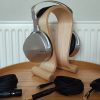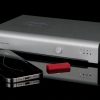Interview with expert digital camera reviewer Jeff Keller, who explains features, reveals gimmicks and tells digicam shoppers what they need to know
Please briefly introduce yourself and your website.
My name is Jeff Keller, I’ve been the sole proprietor of the Digital Camera Resource Page (dcresource.com) since its founding in 1997. My focus has always been to make digital photography easy to understand, so there are plenty of examples and not a lot of technical jargon in my reviews. Over the years I’ve reviewed over 550 cameras! Other features on the site include a database of over 1700 cameras, with tools available to help narrow down your choices. We also have forums, a FAQ, and links to other relevant websites.
Is there such thing as a perfect camera?
I’m yet to find a perfect camera. Even the very best cameras have at least some flaws, whether its related to photo quality, performance or usability.
What are the most common digital camera flaws?
In terms of photo quality, I’d say highlight clipping, purple fringing, corner blurring, detail smudging (due to noise reduction), and redeye. Most of those are found on compact cameras, though some interchangeable lens cameras these issues will pop-up, as well.
There can also be usability issues, though I admit that these are somewhat subjective. Clunk menus, poor control layout, and tiny controls are a few that come to mind. There are also issues which I think degrade the user experience — especially on lower end cameras — like manufacturers not including a printed manual with the camera.
What are the main differences in the picture quality between point & shoot, SLR and interchangeable lens (mirrorless) cameras?
In general, mirrorless interchangeable lens cameras and D-SLRs will have better photo quality because they have larger sensors, which mean better performance at high sensitivities and less highlight clipping. The mirrorless cameras come in two flavors: those with APS-C sensors, and those with Four Thirds sensors. The latter will have more of the photo quality issues I mentioned earlier, due to their smaller sensors. While most point-and-shoot cameras have tiny sensors, there are some (Canon PowerShot G12, Panasonic Lumix DMC-LX5 for example) that have larger sensors, and thus better photo quality.
Do megapixels matter anymore? How important is the digital camera sensor and the lens?
Yes, megapixels absolutely matter. There was a brief pause in the “Megapixel Wars,” but camera manufacturers are back at it, putting 16 Megapixel sensors into point-and-shoot cameras. The results are not good. Buyers should be looking for cameras with larger sensors, rather than more Megapixels. For example, the typical compact camera has a 1/2.3″ sensor, while the Canon and Panasonic I just mentioned are 1/1.7″ and a 1/1.63″, respectively. It may not sound like much, but it matters.
The lens also matters, especially on interchangeable lens and D-SLR cameras. Don’t expect a lot from your kit lens. Quality glass costs a bundle, but remember that when you buy such a camera, you’re buying into a system, so these lenses should last for a long time.
Does the memory card type/size/speed matter?
It’s not as big of a deal as it used to be. Nearly all cameras support SD cards now, so people aren’t locked into proprietary formats like xD or Memory Stick. As for size, it depends on what you’re doing with your camera. Most folks can survive on 2GB cards, while those taking a lot of HD movies will want something like 8GB. Speed is really only a big deal if your camera has an HD movie mode, in which case you want an SD card rated at Class 6 or higher.
What are some camera manufacturer / marketing gimmicks consumers should be aware of?
Lately there have been a bunch of cameras that are supposed to be “high sensitivity,” but they use the same small sensors and slow lenses as other cameras. You won’t find it on the box, but do your research and find out the real sensor size before you buy. You’ll also want to pay attention to the “maximum aperture” on a camera’a lens. You want the range to be lower, which means that more light is let in to hit the sensor. For example, F2.0 – F3.3 is more desirable than F2.8 – F4.8.
What times of the year do manufacturers generally release new cameras?
Usually around the major photo and electronics expos. This tends to be around January and September. Previous models usually go on sale at or around the same time.
What improved digital camera features would you like to see?
I’d love to see a compact ultra zoom camera with a higher quality lens/sensor combination. The current crop of high sensitivity cameras all have 3X or 4X zooms — how about 12-14X?
And, as an owner of an interchangeable lens camera, I’d like to see more high quality lenses available. Kind of like “L” lenses for Canon D-SLRs, but for Micro Four Thirds (in my case).
See thousands of digital camera reviews on eCoustics!
After reviewing hundreds of digital cameras, what are some secrets that most people wouldn’t know?
Take the brand name on the lens with a grain (or three) of salt. Just because a lens has a fancy, foreign-sounding name, doesn’t mean that it was designed or manufactured by that company. It’s all marketing…






























